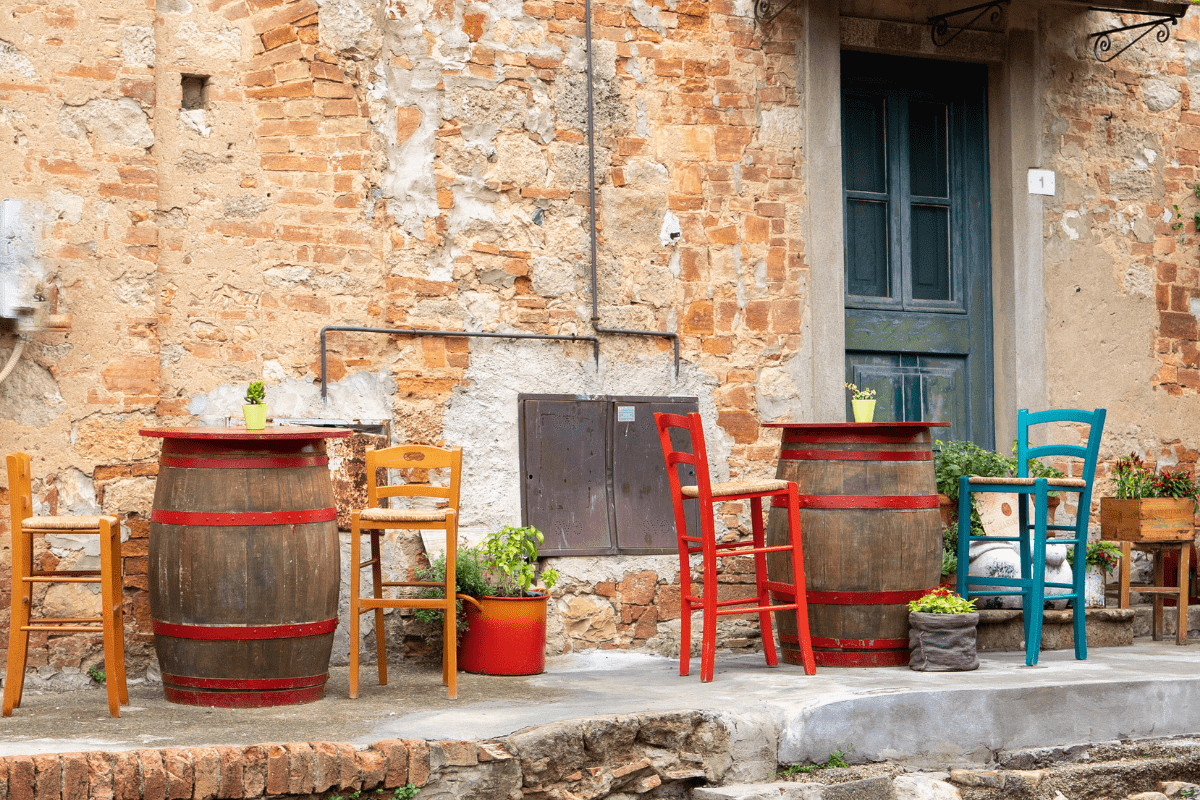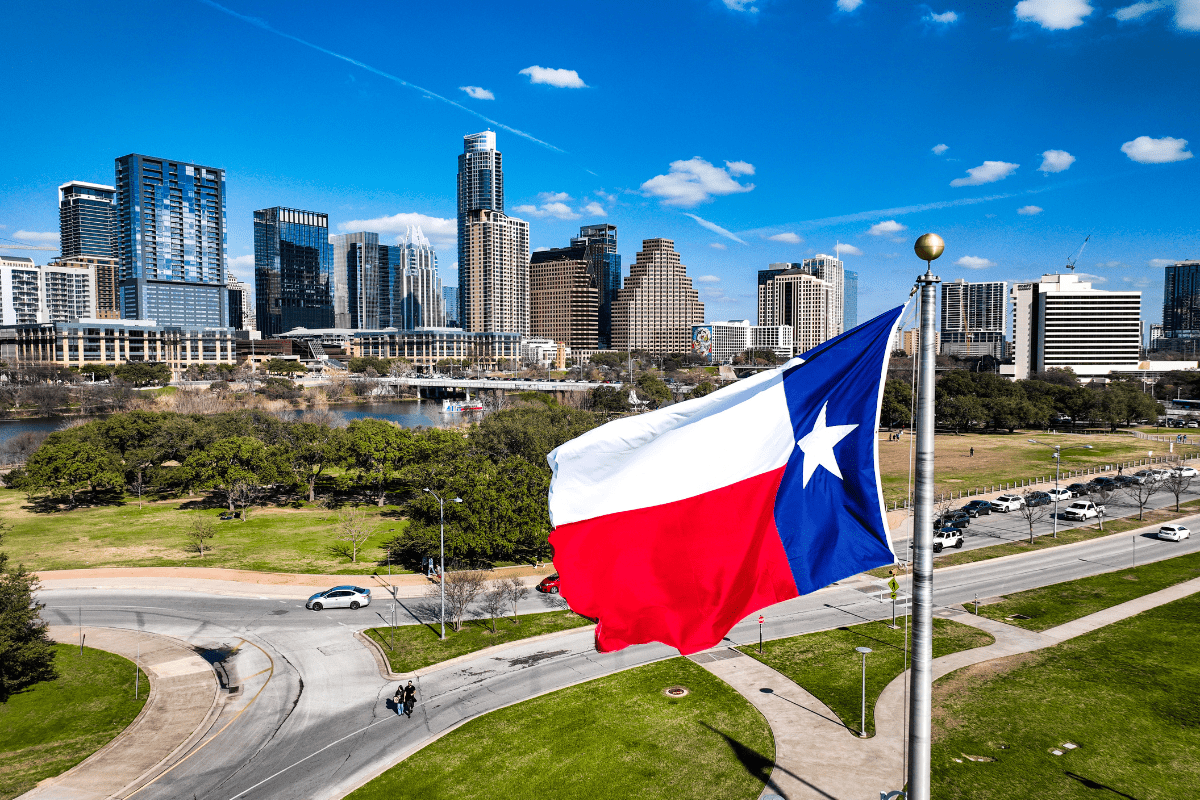You know that feeling when you walk into a restaurant and the walls practically whisper stories from another century? In Texas, dozens of establishments have been serving the same family recipes since before your great-grandparents were born, surviving everything from Prohibition to pandemics with a stubborn resilience that would make any Texan proud.
The miracle of surviving in the restaurant business
Here's something that'll make you appreciate these places even more: while most restaurants barely make it past their sixth birthday, Texas has establishments that have been slinging hash for over a century. We're talking about places that represent just 0.01% of all restaurants… basically unicorns with deep fryers.
The statistics are honestly brutal. About 80% of restaurants fail within their first five years, and only 10% celebrate their tenth anniversary. Meanwhile, Scholz Garten in Austin has been pouring beers since 1866. That's not just survival, that's basically immortality in restaurant years.
What makes this even more impressive is the economic impact these survivors generate. Texas's heritage tourism brings in $7.3 billion annually, and the restaurant industry just crossed $100 billion in annual sales for the first time ever. These historic spots aren't just museums where you can eat… they're economic engines employing 1.46 million Texans.
The German roots run deep
Let's start with the granddaddy of them all: Scholz Garten in Austin, which holds the title of Texas's oldest continuously operating restaurant.
August Scholz, a Civil War veteran who apparently decided making beer was better than making war, opened this limestone beer garden in 1866. The Austin Saengerrunde, a German singing society, bought the place in 1908 and still owns it today. How many restaurants can say they've had the same institutional owner for over a century?
The Texas Legislature even got in on the love fest in 1966, officially recognizing Scholz Garten as "a gathering place for Texans of discernment, taste, culture, erudition, epitomizing the finest tradition of magnificent German heritage in our State." Politicians using words like "erudition"? Those were different times, folks.
What I find hilarious is that the current operator, Daniel Northcutt, is actually August Scholz's great-great-great grandson. Talk about keeping it in the family. His philosophy of "less is more" has kept the original bowling alley running (yes, there's a bowling alley), while the menu maintains classics like Wiener schnitzel alongside, you know, actual edible food for the rest of us.
Schilo's and the root beer revolution
Down in San Antonio, Schilo's Delicatessen has been serving split pea soup since 1917, and here's where it gets interesting.
"Papa" Fritz and "Mama" Laura Schilo had the foresight to transform their saloon into a delicatessen right before Prohibition hit. Their stroke of genius? Creating homemade root beer to replace the actual beer their German customers were craving. It's like methadone for beer lovers, except it actually worked.
The deli operates from its 1942 location in what used to be a currency exchange bank, and they turned the original vault into a walk-in cooler. Current owner Bill Lyons refuses to hire professional chefs because he doesn't want anyone messing with Mama Schilo's original 1917 recipes. Sometimes stubbornness is a virtue.
Tex-Mex pioneers who changed everything
The story of Tex-Mex wouldn't exist without places like El Fenix in Dallas, which basically invented the combination plate we all know and love.
The combination plate revolution
Miguel Martinez, who fled Mexico during the Revolution, opened what would become El Fenix in 1918. His daughter claims he invented the combination plate (enchilada, tamale, beans, and rice on one plate) possibly just to save on dishwashing.
This lazy genius move became the template for thousands of Tex-Mex restaurants nationwide. Sometimes the best innovations come from just not wanting to wash extra dishes.
Mi Tierra's accidental Christmas
San Antonio's Mi Tierra Café represents the American Dream on steroids. Pedro and Cruz Cortez started with $150 and three tables in 1941, serving farmers at Market Square.
Now here's my favorite part: their famous year-round Christmas decorations started completely by accident in 1968. The family was too busy during HemisFair preparations to take them down, said "screw it," and left them up. Now tourists come from around the world specifically to eat enchiladas under Christmas lights in July. The restaurant has been open 24 hours since 1951, because apparently sleep is for quitters.
Joe T. Garcia's and the cash-only empire
Fort Worth's Joe T. Garcia's started as a 16-seat operation in the Garcia family home in 1935. Today it covers an entire city block, and they still only take cash.
Their menu is basically just enchiladas and fajitas, and they don't care if you wanted something else. George W. Bush didn't complain. Neither did Julia Roberts. The garden patio has over 1,000 potted plants and a converted swimming pool fountain, creating an oasis that makes you forget you're in Fort Worth entirely.
The barbecue dynasties
Texas barbecue is serious business, and nobody knows this better than the families who've been smoking meat for generations.
Black's BBQ in Lockhart opened in 1932 and remains the oldest continuously family-owned barbecue restaurant in Texas. They've served over 50 million guests using the same basic approach: post oak wood, salt, pepper, and the radical belief that great barbecue doesn't need sauce.
The 2008 family split that created Terry Black's BBQ added some soap opera drama to the barbecue scene, but the original keeps doing what it's always done in Lockhart, which the state officially designated as the "Barbecue Capital of Texas." Because of course Texas would officially designate a barbecue capital.
Sonny Bryan's school desk dining
In Dallas, Sonny Bryan's Smokehouse has been using the same "lean-side-down" smoking method since 1910. Elias Bryan pioneered this technique, which keeps the meat moist as the fat renders away, and four generations later they're still using his closely guarded sauce recipe.
The original location's quirky tradition of using old school desks as dining tables somehow earned them a James Beard Foundation America's Classics Award in 2000. Nothing says fine dining like eating barbecue hunched over a desk where some kid probably failed algebra in 1952.
Pizzitola's and the Jim Crow era
Houston's Pizzitola's Bar-B-Cue tells a different story, one that reflects the complicated history of the South. Originally opened in 1935 as Shepherd Drive BBQ by African American pitmasters John and Leila Davis, the restaurant operated under Jim Crow restrictions.
Black customers dined inside while white patrons had to use a walk-up window, a reversal of the usual segregation practices. The original 1930s brick pits are still smoking meat today, with the current staff bringing a combined 100+ years of pitmaster experience. That's not a staff, that's a barbecue university.
Gulf Coast survivors
Along the Texas coast, restaurants don't just battle economic challenges… they fight actual hurricanes.
Christie's Seafood & Steaks, Houston's oldest restaurant dating to 1917, started as Theodore Christie's fried fish stand on Galveston's seawall. This Greek immigrant was selling 10,000 fish sandwiches weekly at his peak, which is roughly 9,999 more than I could eat.
After relocating to Houston in 1934 and then to Westheimer in 1979, Christie's still serves the exact same fried fish sandwich recipe from 1917. They even got a National Trust for Historic Preservation grant, proving that sometimes a really good fish sandwich is worth preserving for posterity.
Gaido's in Galveston, established in 1911, was the city's first year-round seafront restaurant. They maintain a policy of only serving fish caught within 24-36 hours and can tell you exactly which boat and captain brought in your red snapper. They've survived multiple hurricanes, which makes them tougher than most of us.
Small towns, big flavors
Beyond the big cities, small Texas towns are keeping their own traditions alive.
Czech out West, Texas
The town of West (yes, the town is called West, and no, it's not in West Texas) is the self-proclaimed "Kolache Capital" of Texas. The Czech-American Restaurant, family-owned since 1980, serves traditional pastries alongside innovations like the "Bohemian" sandwich… sausage, sweet sauerkraut, and pepper jack cheese. It's what happens when Czech grandmas meet Texas creativity.
German Hill Country hideaways
Fredericksburg's German heritage shows up in places like the Old German Bakery & Restaurant, many occupying buildings from the Republic of Texas era. These aren't just restaurants, they're time machines that serve schnitzel.
Marfa does it differently
Out in far West Texas, The Sentinel in Marfa proves that historic preservation doesn't mean frozen in time. This century-old adobe building functions as restaurant, bar, coffee shop, newspaper office, and general community hub. It's basically the Swiss Army knife of historic buildings.
What the experts say
Food historian Adán Medrano, who literally wrote the book on Texas Mexican cuisine, points out that these restaurants preserve "15,000-year indigenous traditions." That's right… when you're eating that breakfast taco, you're participating in a tradition older than recorded history.
Patricia Sharpe from Texas Monthly puts it perfectly: "It's our unique way of blending our three major culinary traditions… Southern, Mexican, and Western… that makes us different from any other state." Where else can you get barbecue, kolaches, and breakfast tacos within a five-mile radius?
The preservation challenge
These places face real challenges that would make most restaurant owners curl up in their walk-in freezers and cry.
Current obstacles facing historic restaurants:
- Labor shortages affecting 48% of establishments
- Supply chain disruptions hitting 77%
- Food costs up 25% from pre-pandemic
- Aging founders without succession plans
- Rising property taxes in gentrifying areas
- Competition from chains with deeper pockets
The good news? Organizations are stepping up. The National Trust's Backing Historic Small Restaurants program has distributed $5.7 million to 130 establishments since 2021. Texas's own Historic Preservation Tax Credit program can offset up to 45% of rehabilitation costs when combined with federal credits.
Planning your historic restaurant road trip
Ready to eat your way through Texas history? Here's how I'd do it.
The Central Texas Time Machine: Start with breakfast at Scholz Garten in Austin, where you can have a beer with your eggs because this is Texas and we make our own rules. Drive south for lunch at Mi Tierra in San Antonio, where the Christmas decorations and mariachi music create a perpetual party atmosphere. End in Lockhart at Black's BBQ for dinner, where five generations of pit masters have perfected the art of meat.
The North Texas Trail: Begin at Joe T. Garcia's garden patio in Fort Worth for lunch (bring cash, they don't do that newfangled credit card nonsense). Hit the original Sonny Bryan's in Dallas for dinner, where you can eat world-class barbecue at a third-grader's desk. Finish at El Fenix for late-night Tex-Mex and margaritas.
The Gulf Coast Seafood Circuit: Start at Christie's in Houston for that historic fried fish sandwich, then drive to Galveston for fresh Gulf seafood at Gaido's. Circle back to Houston for barbecue at Pizzitola's, where the pits have been smoking since the Depression.
Essential tips for visiting historic restaurants:
- Call ahead… some keep irregular hours
- Bring cash for places like Joe T's
- Don't expect fast service
- Order the signature dishes first
- Ask about the history
- Look for original architectural details
- Take photos of vintage signs
The bottom line on Texas history you can taste
These restaurants aren't just serving food… they're preserving ways of life that would otherwise exist only in history books. Every time someone orders Mama Schilo's split pea soup or sits at Sonny Bryan's school desks, they're voting with their wallet to keep these traditions alive.
In an era when restaurant chains multiply like rabbits and every strip mall looks identical, these historic establishments remind us that food is about more than calories and convenience. It's about community, tradition, and the stubborn belief that if something's been working for a century, why change it now?
The next time you're in Texas, skip the chain restaurant and find one of these historic gems. Order what they've been making since before your grandparents met. Sit where countless others have sat before you. Taste the recipes that survived wars, depressions, and that time everyone thought low-fat everything was a good idea.
Because in a world that changes faster than a Texas thunderstorm, these restaurants offer something increasingly rare: permanence, authenticity, and proof that with enough determination, family recipes, and maybe a little stubbornness, you really can make something last forever. Or at least long enough to outlive 99.99% of your competition, which in the restaurant business is basically the same thing.





